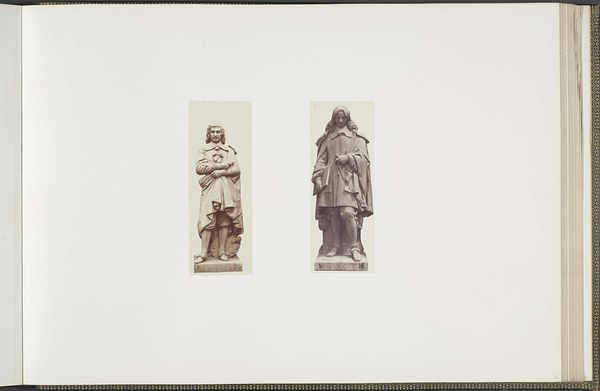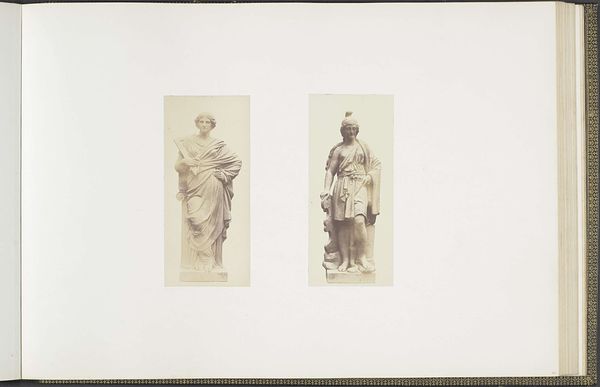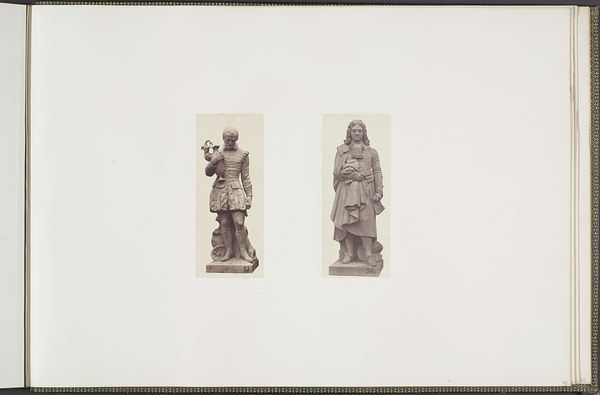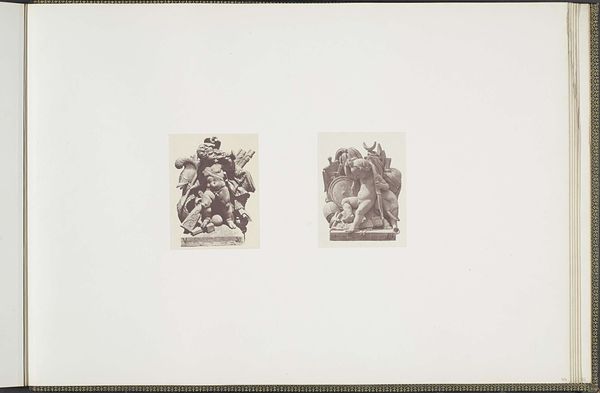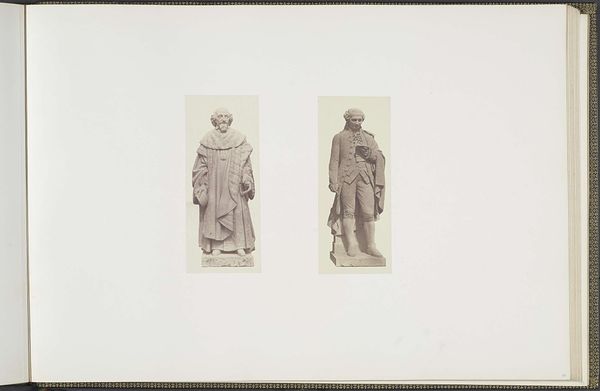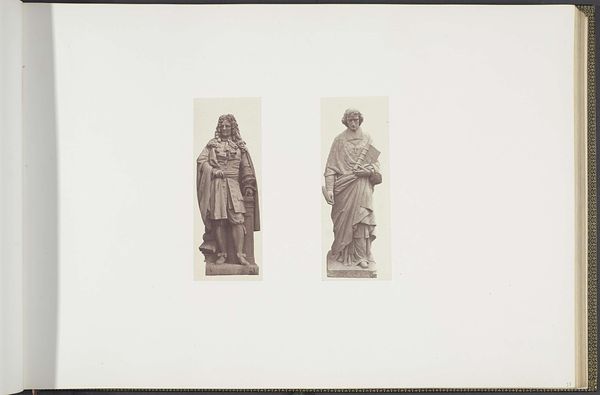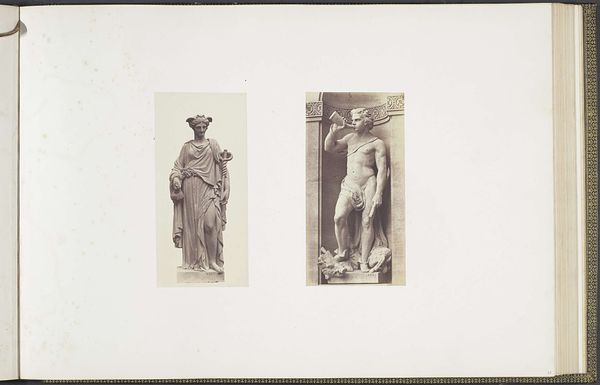
Gipsmodellen voor beeldhouwwerken op het Palais du Louvre: links "Bourdaloue"door Louis Desprez en rechts "Racine" door Michel-Pascal c. 1855 - 1857
0:00
0:00
print, photography, sculpture
#
portrait
# print
#
photography
#
sculpture
#
academic-art
Dimensions: height 378 mm, width 556 mm
Copyright: Rijks Museum: Open Domain
Edouard Baldus made this photograph of plaster models for sculptures at the Louvre in France, sometime in the mid-19th century. It shows how the institution of the museum supported the production and celebration of art. Specifically, it depicts models of Bourdaloue by Louis Desprez and Racine by Michel-Pascal, two prominent French figures in the fields of religion and literature during the 17th century. By placing their likenesses on the facade of the Louvre, these sculptures participate in a visual code that elevates French culture and links it to an illustrious past. Baldus's photograph also speaks to the culture of 19th-century France, when the nation sought to define its identity through a connection with its history, constructing and enshrining national heroes through its museums and institutions. Understanding an artwork like this requires us to consider how institutions shape art, how images convey meaning, and how the social conditions of a time influence artistic creation. Researching the history of the Louvre and the politics of 19th-century France is crucial to fully appreciate this piece.
Comments
No comments
Be the first to comment and join the conversation on the ultimate creative platform.

